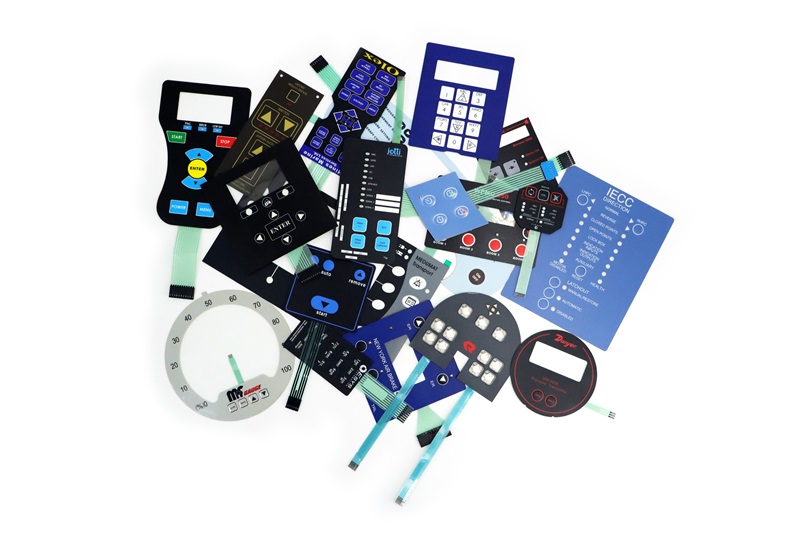
Three kinds of thin film materials for thin film panel
The membrane panel is made using three different types of membrane materials. According to the introduction, these materials are suitable for creating the membrane. The three types of materials are ordinary PC, PVC, and PET. The surface of the membrane can either be sand or smooth. The physical chemistry of these materials is excellent, and their inks are commonly used for thin film switch panel layers.
The choice between sand and smooth surfaces depends on the specific requirements of the panel. For electronic thin film switches, the panel, as the control system, should not be disturbed by light. The sand surface material is preferred in such cases because it only has diffuse reflection and does not produce bright reflections. Additionally, the sand surface has the advantage of hiding scratches due to its disorderly nature.
On the other hand, the smooth surface material does not possess these characteristics. However, it is a popular choice for matte materials because it produces bright and eye-catching colors when printed on the back. This makes it suitable for panels that require strong decorative elements and do not require regular contact.
In certain display areas, such as Liquid Crystal Displays (LCDs), the use of matte materials is advantageous. This is due to specific requirements or preferences for these areas.
The price of this thin film material is very low, about half of that of PC material. If we choose polyvinyl chloride materials, we can reduce the cost of production. At the same time, PVC material has good ductility, can be cold-pressed processing. Smooth polyvinyl chloride are generally over 0.5 mm thick and are protected on both sides by pet paper or gummed paper. Most of them are used for decorative panels, while polyvinyl chloride are usually less than 0.3 mm thick and are usually provided with fixed length paper without rolls. The surface state of the film, are generally smooth transparent film, in a few cases also have sand products such as Japanese wood products, but the sand surface is very thin, similar to a non-bright surface layer, in the pet surface and get a non-bright surface, unlike PC, it is not rolled through a sand surface during mechanical calendering, which means its surface is not as obvious as PC.
